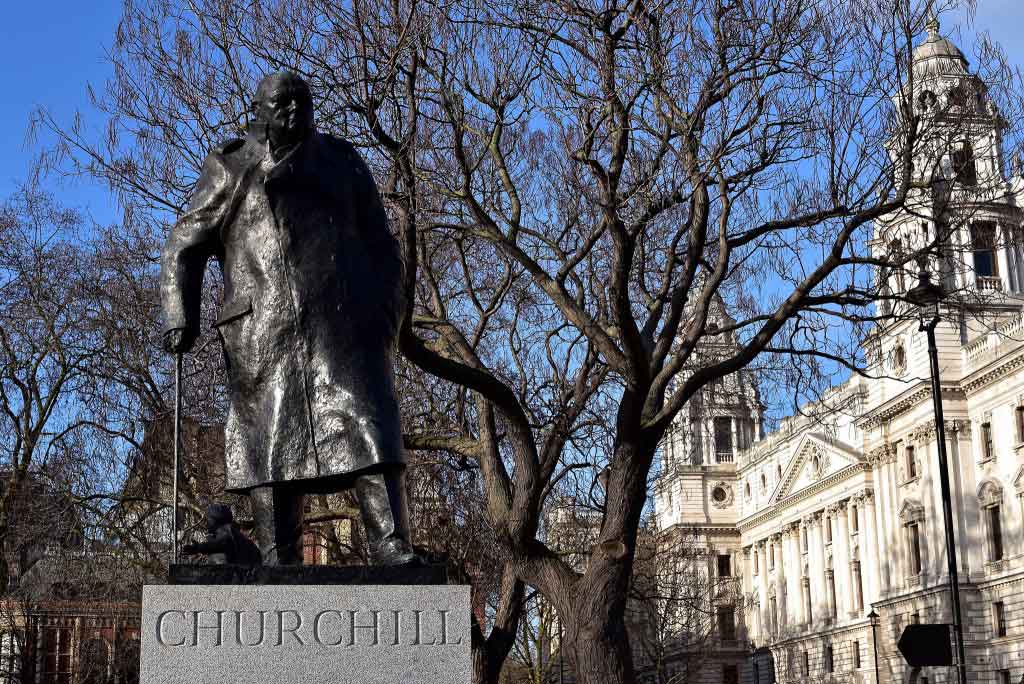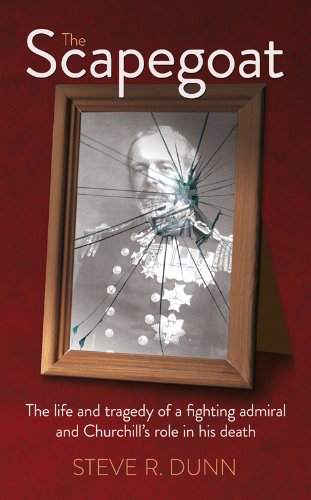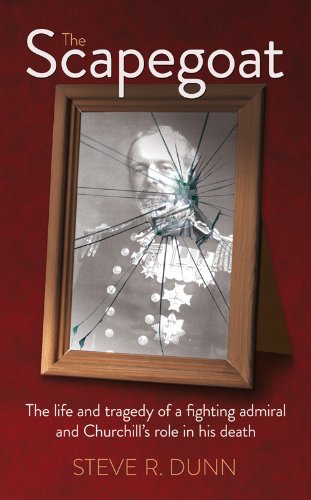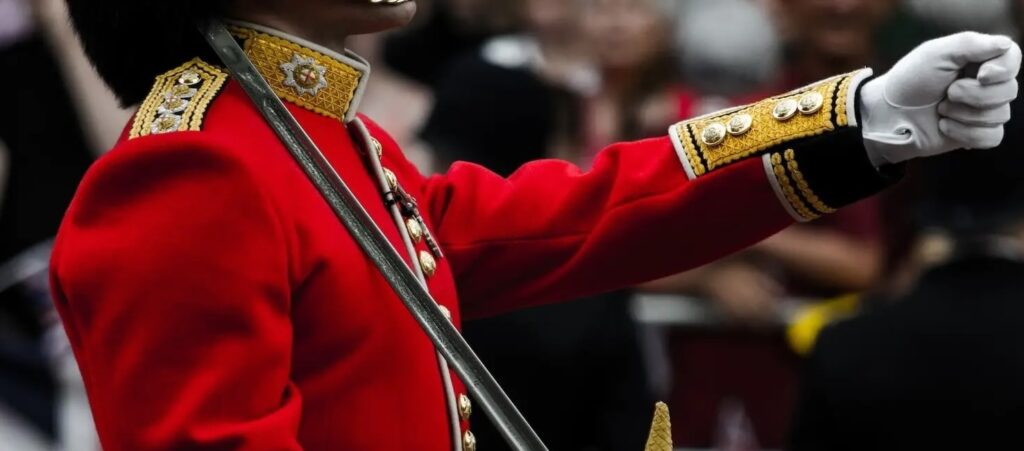
Finest Hour 170
Books, Arts & Curiosities – Forgotten Hero

December 3, 2015
Finest Hour 170, Fall 2015
Page 37
Review by W. Mark Hamilton
Steve R. Dunn, The Scapegoat: The Life and Tragedy of a Fighting Admiral and Churchill’s Role in His Death, Book Guild Publishing, 2014, 251 pages, £17.99.
ISBN 978-1846249716
 Steve R. Dunn has brought back to life a forgotten hero of the Royal Navy. Not only does the author focus on the life of Rear-Admiral Sir Christopher “Kit” Cradock, but on the life and times of the late Victorian and Edwardian Navy—Dunn’s “Vicwardian Navy.” Cradock’s actions at the Battle of Coronel in November 1914 resulted in the first British naval defeat in 100 years and the loss of 1,600 lives off the coast of central Chile. Yet, Dunn’s effort portrays Cradock as a true hero up against the questionable actions of the ambitious and youthful First Lord of the Admiralty, Winston Churchill. The book is extremely critical not only of Churchill’s actions, but of the class-ridden Royal Navy’s officer “establishment” before 1914. Cradock personally did not welcome Churchill’s arrival at the Admiralty in 1911 and believed the new First Lord never liked him.
Steve R. Dunn has brought back to life a forgotten hero of the Royal Navy. Not only does the author focus on the life of Rear-Admiral Sir Christopher “Kit” Cradock, but on the life and times of the late Victorian and Edwardian Navy—Dunn’s “Vicwardian Navy.” Cradock’s actions at the Battle of Coronel in November 1914 resulted in the first British naval defeat in 100 years and the loss of 1,600 lives off the coast of central Chile. Yet, Dunn’s effort portrays Cradock as a true hero up against the questionable actions of the ambitious and youthful First Lord of the Admiralty, Winston Churchill. The book is extremely critical not only of Churchill’s actions, but of the class-ridden Royal Navy’s officer “establishment” before 1914. Cradock personally did not welcome Churchill’s arrival at the Admiralty in 1911 and believed the new First Lord never liked him.
During the early months of the First World War, Cradock found himself and his squadron facing German Vice-Admiral Maxmilian von Spee off the coast of South America. All the belligerents knew the German squadron was vastly superior as a fighting unit to the British. As the conflict approached, Cradock requested additional naval support, which was refused.
The author paints a picture of confused and untimely messages between Cradock and the Admiralty. Cradock understood that his orders were to fight to the end, regardless of the odds against him. Churchill ultimately blamed Cradock for dividing his forces as von Spee approached. Cradock’s decision to confront the German ships—which had more firepower and speed— resulted in the destruction of two British ships and Cradock’s death. Churchill’s subsequent criticism in The World Crisis of Cradock’s actions caused great controversy.
Dunn goes into considerable detail concerning Cradock’s career and family, and the author seems to speculate on the sexual orientation of the life-long bachelor without providing definitive evidence. Cradock’s China Station service during the Boxer Rebellion (1900) is noted, as is his heroic saving of the life of the Crown Prince of Siam while at sea and the subsequent jewel-encrusted gift he received from a grateful father and monarch. Cradock’s friendly and supportive interactions with the British Royal Family are well documented, including his service as naval aide-de-camp to King Edward VII in 1909.

2024 International Churchill Conference
Dunn makes no pretense of being a professional historian, and this is evident in the many “side roads” diverting the reader from the main historical narrative. Still, the side roads are interesting and informative. Dunn portrays Churchill as a strong defender of the Admiralty status quo without discussing Churchill’s reforms of the naval staff and administrative planning before 1914. Dunn’s bibliography is solid, but the lack of photo captions is an unfortunate omission. Also, the membership of the British Navy League in 1914 was 100,000 at most—certainly not 2.5 million! The Scapegoat is well worth reading to rediscover a nearly forgotten British naval hero and the men of his squadron, who drowned in the cold waters off Chile. To blame most of this calamity on Churchill remains, to this reviewer, open to question.
To its credit the Royal Navy achieved rapid and decisive revenge with the destruction of Admiral von Spee, his two sons, and 2,000 German sailors at the Battle of the Falkland Islands in December 1914.
W. Mark Hamilton holds a Ph.D. in International History from the London School of Economics and Political Science and is the author of The Nation and the Navy: Methods and Organization of British Naval Propaganda, 1889–1914 (Garland Publishing Inc., 1986).
Subscribe
WANT MORE?
Get the Churchill Bulletin delivered to your inbox once a month.


